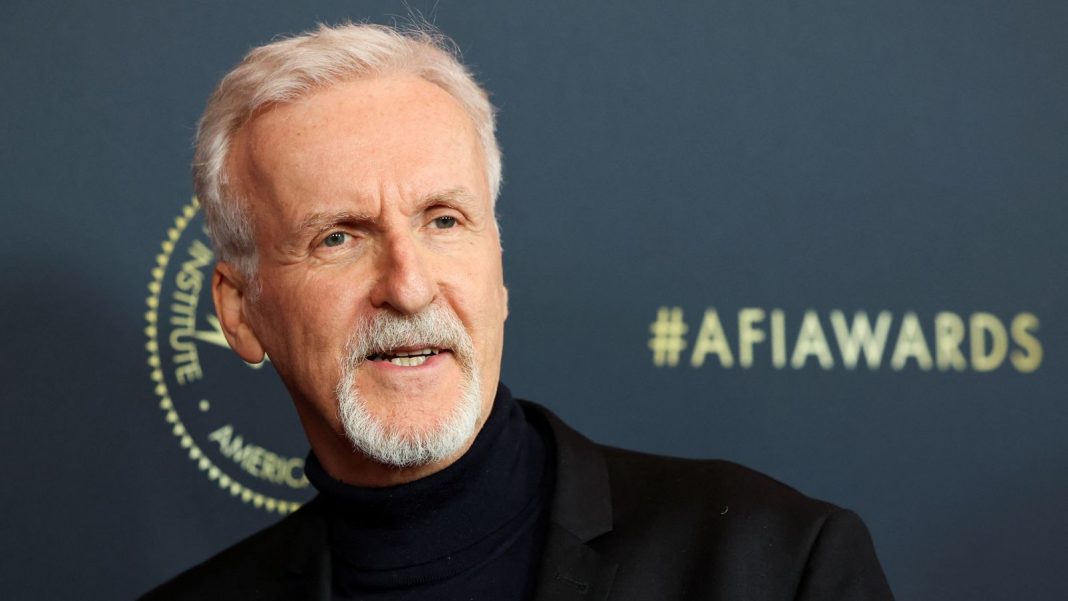Titanic director James Cameron says he knew the Titan submersible had been destroyed less than 24 hours after the vessel lost contact.
In an interview with Reuters on Thursday, filmmaker Cameron said he learned of the acoustic findings within a day, and knew what it meant.
“I sent emails to everybody I know and said we’ve lost some friends. The sub had imploded. It’s on the bottom in pieces right now. I sent that out Monday morning,” he recalled.
Tributes paid to Titan passengers – live updates
Cameron said he wished he sounded the alarm on OceanGate’s technology earlier.
The director, who has dived to the Titanic wreck 33 times, said he is part of the small and close-knit submersible community.
Please use Chrome browser for a more accessible video player
0:58
‘Catastrophic loss of pressure chamber’
When he heard that OceanGate was making a deep-sea submersible with a composite carbon fibre and titanium hull, Cameron said he was sceptical.
“I thought it was a horrible idea. I wish I’d spoken up, but I assumed somebody was smarter than me, you know, because I never experimented with that technology,” he said.
The five who were killed mark the first deep-sea fatalities for the industry, Cameron said – as he branded the rescue mission a “prolonged and nightmarish charade”.

Titan submersible in June 2021. File pic: OceanGate Expeditions via AP.
The director said the industry standard is to make pressure hulls out of contiguous materials such as steel, titanium, ceramic or acrylic, which are better for conducting tests.
“We celebrate innovation, right? But you shouldn’t be using an experimental vehicle for paying passengers that aren’t themselves deep ocean engineers,” Cameron said.
Cameron also noted the similarities between the Titan and the Titanic, saying both tragedies were preceded by unheeded warnings.
“Here we are again,” he said. “And at the same place. Now there’s one wreck lying next to the other wreck for the same damn reason.”

James Cameron posing with Titanic stars Kate Winslet and Leonardo DiCaprio after winning several Golden Globe Awards in 1998
‘I felt in my bones what happened’
In an interview with BBC News, Cameron described how he “felt in my bones what had happened”.
“For the sub’s electronics to fail and its communication system to fail, and its tracking transponder to fail simultaneously – sub’s gone.
“I knew that sub was sitting exactly underneath its last known depth and position. That’s exactly where they found it.”
He added: “[It] felt like a prolonged and nightmarish charade where people are running around talking about banging noises and talking about oxygen and all this other stuff.
“I immediately got on the phone to some of my contacts in the deep submersible community.
“Within about an hour I had the following facts. They were on descent. They were at 3,500m, heading for the bottom at 3,800m.
“We now have another wreck that is based on unfortunately the same principles of not heeding warnings.”
Read more:
What happened to the Titan submersible?
Who were the five men on board Titan?
This content is provided by Spreaker, which may be using cookies and other technologies.
To show you this content, we need your permission to use cookies.
You can use the buttons below to amend your preferences to enable Spreaker cookies or to allow those cookies just once.
You can change your settings at any time via the Privacy Options.
Unfortunately we have been unable to verify if you have consented to Spreaker cookies.
To view this content you can use the button below to allow Spreaker cookies for this session only.
Click to subscribe to the Sky News Daily wherever you get your podcasts
Cameron became a deep-sea explorer in the 1990s while researching and making blockbuster Titanic, and is part owner of Triton Submarines, which makes submersibles for research and tourism.
Titanic, the 1997 film starring Kate Winslet and Leonardo DiCaprio, won 11 Academy Awards and earned more than $2.25bn (£1.94bn) worldwide.







